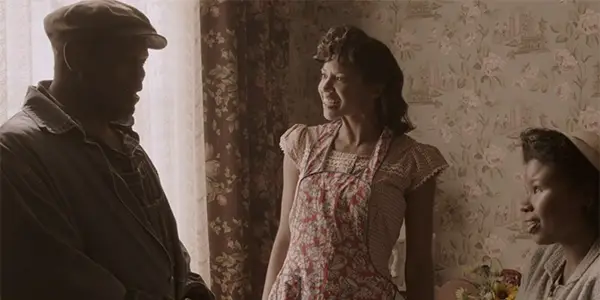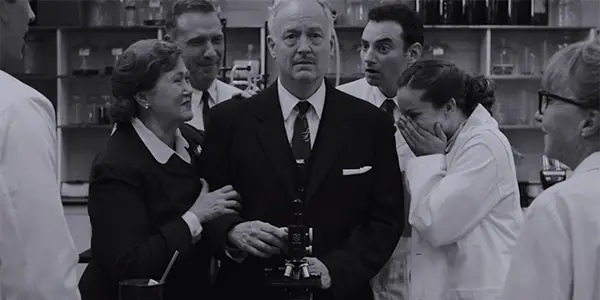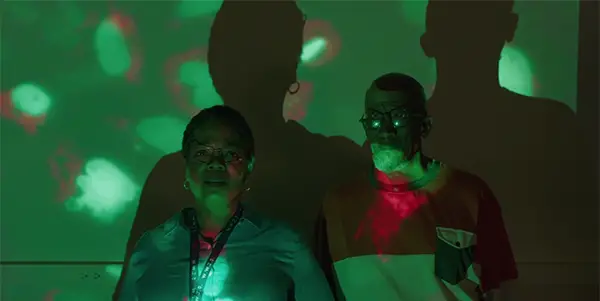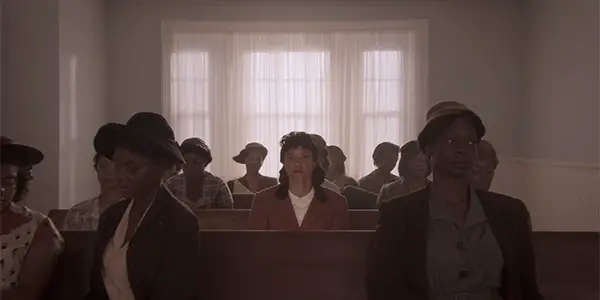THE IMMORTAL LIFE OF HENRIETTA LACKS: An American Ghost Story

Brian Walter is a college professor by day and a…
“You know as well as I do that people who die bad don’t stay in the ground.”
Pulitzer Prize winner Toni Morrison lends this resonant observation to a supporting character in Beloved, her brilliant 1988 American ghost story of a novel about Sethe, a woman who has heroically escaped slavery but who still must find a way to make peace with the restless, harrowing spirits of the violent past before she can finally create a new, free life of her own.
In her 2010 nonfiction bestseller, The Immortal Life of Henrietta Lacks, journalist Rebecca Skloot spins out another complex American ghost story that both renews and deepens several of Morrison’s central themes. In Skloot’s book too, we read about a black woman whose body was treated as a means of profit without her consent — with massive, generation-spanning consequences for her children and theirs. Which is to say, in Skloot’s book too, the manifold sins of American racism have to be dealt with honestly, openly, and communally before we among the living can hope to help our ghosts finally rest in some sort of peace.
Exclusion and Inclusion
Director George C. Wolfe and HBO Films have now collaborated to bring an inevitably incomplete but still lovely, loving film version of Skloot’s complex and compelling book to the screen. The Immortal Life of Henrietta Lacks carefully combines motifs of exclusion and inclusion as it evokes the story of a woman whose cancer cells miraculously survived her, giving birth to a biomedical industry that would go on to develop a host of new treatments — ranging from the polio vaccine to in vitro fertilization to AIDS c*cktails and beyond — that were specifically enabled by the HeLa cells (the name taken from the first two letters of Henrietta Lacks’s names). It is no exaggeration to say that everyone whose family has sought medical care over the last half-century has benefitted, in one way or another, from Henrietta Lacks.
But, as both the book and the film make clear, it is also no exaggeration to say that those benefits almost completely excluded Henrietta’s own children, the ones whom she would have most wished to benefit from the billion-dollar industries that her cells helped to give birth to. Losing her when they were all too young to fend for themselves, Henrietta’s children only learned of their mother’s remarkable health care legacies decades later, when her real name was finally revealed and various opportunists came sniffing around for descendants who could provide them with the backstory of the mother of modern biomedicine.

The subsequent painful experiences with journalists, attorneys, and con men left the surviving members of the Lacks family angry and distrustful, wondering how corporatized medicine could make billions from the sale and usage of their mother’s cells when her children couldn’t even afford insurance or basic medical care. So when Skloot — a determined young white journalist who had heard of Henrietta’s magical cells in a biology course — started cold-calling the family in the late ’90s to ask questions for the book that she was hoping to write about their mother, the Lacks family was hardly quick to trust her, much less to divulge their mother’s story.
This is deeply tangled territory for a film to navigate. The lives of Henrietta Lacks and her children serve up an often agonizing object lesson in the racialized and starkly segregated triumphs of the American economy, the veritable triumphs of the biomedical industry inextricably intertwined with our culture’s long and infamously sordid history of exploiting the lives of vulnerable populations for profit. Clearly, no movie could hope to capture all of the rich and often horrifying history that Skloot’s 400 pages take the time to convey.
Living Images
Wisely, director Wolfe doesn’t really even try. Instead, The Immortal Life of Henrietta Lacks deftly and touchingly opens up dimensions in the characterization of the women who inspired the book — both Henrietta herself and her longsuffering but determined daughter, Deborah, played powerfully by the film’s co-producer, Oprah Winfrey — that certainly cannot replace but which can, nevertheless, enrich readers’ appreciation of Skloot’s impressive journalistic accomplishments in the book.
The Immortal Life of Henrietta Lacks works very hard and, on the whole, with impressive success to balance two goals. On the one hand, it strives to connect the story of the HeLa cells to our long, chilling history of racial exclusion and exploitation. On the other, just as importantly, it labors to give Henrietta’s children back a living image of their mother whose privacy and very identity were, in effect, taken away from her and from them.
These dual efforts begin with the cleverly designed opening credits. Filling the screen with carefully composed black-and-white scenes of the mid-20th century lab work that uncovered the indomitability of Henrietta’s cells, the opening montage sequence visually conjures an unmistakable sense of sequestered WASP-y nostalgia. The miracle of HeLa, we learn immediately, was accidentally uncovered by self-pleased Cold Warriors in white lab coats, the scientific establishment as whitewashed as the infamous white picket fences of mid-century white-flight suburbia.

But Wolfe just as cleverly ironizes this Leave it to Beaver-ish pseudo-idyll by affixing it to a fast-moving Branford Marsalis number not synchronized to the images. Jazz, perhaps the only original American art form, suggests an entirely different reality that runs over, under, through, and beyond the misleadingly monochromatic discovery of HeLa. By the end of the credits, when an off-camera voice asks oblivious scientist George Gey if he even knows the name of the woman who ‘donated’ the cells, the music has stripped itself down to little more than a pounding drum roll, ominously and perfectly undercutting the authority of the white male scientist who pauses a beat before lying, “Helen Lane.”
The same technical and imaginative care embellishes the evocations of Henrietta’s life in Depression- and World War II-era America, but to opposite effect. Bathed in warm golden hues, the scenes of ‘Hennie’ emphasize the love she poured into dancing, her family, and the hard-working members of her community who loved her right back, the friends and acquaintances for whom she always found a hot meal and a spot on the sofa lining up nervously but determinedly by the dozen to give blood for their beloved community pillar in response to the fateful news that she is sick in hospital.
Some reviews have criticized the flattering treatment of Henrietta’s life as too gauzy, too paradisal, even hagiographic. But it’s just as easy to argue that these are the scenes that work most searchingly to repair the added historical insult heaped on Henrietta’s descendants — not just to learn that their mother’s body had been used to fuel the creation of such massively profitable industries but that she herself had been effaced, her voice silenced, by the reduction of her living name to ‘HeLa’ and, worse, its replacement, for many years, by the nonexistent ‘Helen Lane.’ Lit beautifully to wed the human face and figure to their socially vital contexts, these scenes rescue from the overflowing dustbin of history a much-needed image of the actual woman who loved and inspired such love.
Stormy Partnership
Besides, The Immortal Life of Henrietta Lacks has plenty to offer in other sequences to cynics in need of a fix. Wolfe structures the story a bit like Citizen Kane, in which the plot-quest of an investigative reporter serves primarily as the vehicle to tell the broader story of a historical figure’s life — but this time with all sorts of racial complications and resonances. Rose Byrne plays Rebecca Skloot as a plucky, often bemused, frustrated, sometimes frightened, but always determined young white woman venturing into unknown and (for her) fearful territory.
In one of my favorite scenes, Rebecca is dropped off in the sort of poverty-stricken black neighborhood that most whites in this country would find automatically terrifying. The sequence reminds one a bit of the comical john in Cooley High, but unlike the middle-aged white man who, in Michael Schultz’s beautiful, wrenching 1975 urban tragedy, quickly flees in terror, Rebecca ventures into the home of the middle-aged black man, who immediately welcomes her with a home-cooked breakfast.
This is one of several scenes in which Wolfe uses Byrne’s naive but determined Rebecca to expose racist stereotypes. But as important as her journalistic quest is in driving the plot, Rebecca hardly drives this film. In fact, in a neat inversion of so many American stories that pair a dominating white character with a supporting, even subservient black character (from The Adventures of Huckleberry Finn to To Kill a Mockingbird to Lethal Weapon and beyond), Wolfe’s film upends the tradition, using Rebecca as a functional means to open up the complexities of Deborah Lacks, Henrietta’s surviving daughter and the story’s urgently beating heart.

Deeply suspicious, often indignant, always haunted by the losses and insults she and her family have endured, Winfrey‘s Deborah nevertheless also overflows with joy, curiosity, and sheer, restless vitality. Winfrey manages to make the screen version of Deborah (or ‘Dale,’ as her family calls her) every bit the the powerhouse she is in Skloot’s book, fierce in her loyalties and dauntingly, sometimes even frighteningly mercurial in her need to use Rebecca’s efforts to carve out some safe space for her mother’s legacy, free from the exploitations of history.
Most of The Immortal Life of Henrietta Lacks follows the ups and downs of this difficult, sometimes even stormy partnership between Henrietta’s distrustful daughter and ‘her reporter,’ as she humorously refers to Rebecca at several points. As her reporter continues to call and come around, to travel with Dale to meet her equally distrustful brothers or to visit their birthplace in Clover or to discover the unspeakable truth of what happened to their sister Elsie in the notorious Crownsville State Hospital, Wolfe continues to blend in scenes of young mother Hennie learning of her cancer and facing the prospect of leaving her children at such tender, vulnerable ages.
Perhaps the most remarkable scene in The Immortal Life of Henrietta Lacks finds Deborah and Rebecca in their last visit to the Clover, Virginia home where Henrietta gave birth to her children. Deborah has grown more and more manic under the burden of her mother’s story, and in a powerful transference, a cousin prays that the burden will be shifted to the young, incredulous writer. It is a scene from an old-fashioned tent revival that leaves the unbeliever Rebecca shocked and skeptical but mesmerized, even transformed. When she asks, “Do you believe Henrietta is in those cells?”, the answer crystallizes The Immortal Life of Henrietta Lacks’s lesson in the triumph of the individual over the voracious forces of history: “Henrietta is those cells.”
Past is Present
The careful blending of Hennie’s story with the quest of Dale and Rebecca sends an unmistakable message. The past of Henrietta Lacks and the historical injuries she sustained never really ended, of course; they live and breathe not simply through her cells, but most truly and importantly through her children, whose lives were shaped by their mother even though she was taken from them so soon.

Wolfe finds a simple, eloquent way to wed the two story-lines visually. Toward the end of The Immortal Life of Henrietta Lacks, Rebecca, Deborah, and Zakariyya, perhaps the most tragic figure among Henrietta’s surviving children, return to Johns Hopkins Hospital in Baltimore, where their mother’s cells had been taken. There, they get to see the miracle of HeLa first under a microscope but then projected onto them, the mother they never really knew momentarily literalized in their own bodily selves. It is a lovely image and a lovely sequence in a film that seeks to capture the yearning and love of the children for their long-lost mother.
Historical Midwifing
At the beginning of the Johns Hopkins scene, Wolfe sends the actual Rebecca Skloot in a nurse’s uniform to usher Deborah and the others to the lab where they will immerse themselves in HeLa. It’s a perfect choice for the author’s cameo, the kind of woman in white who might well have helped the actual Henrietta give birth to her children and (in a very different way) to her remarkable biomedical legacies in that very place. As they head to the laboratory, we see, through Deborah’s musing point-of-view, one of the warm-tinged images of Henrietta inserted into the flow of colder images of a bustling 21st-century hospital.
In Morrison’s Beloved, it’s a crazy white girl who helps Sethe give birth to her only child born into freedom. Here too, the young white woman with no prior personal connection to the HeLa story nevertheless helps to give Henrietta back to her children, an act of ironic historical midwifing that cannot simply atone for the crimes of history, but which does help to ease their burden, to restore the identity of a victim who bequeathed so much to all of us.

It would not be difficult to criticize the film version of The Immortal Life of Henrietta Lacks for being too brief in its treatment of the complexities that the book navigates or even too starry-eyed in its idealization of the woman in the title. But the film amply compensates such critiques with a vision that is as richly and meaningfully loving as it is clear-eyed about the racist sins that continue so to dog us as a culture and a nation. History speaks in this film with a clear, often angry human voice, but it also, more poignantly, helps our restless ghosts to reclaim their warm human faces. That is a gift to admirers of the book that, in this case, engages and, to an impressive degree, fulfills equally urgent moral and imaginative imperatives.
Does the film do Henrietta Lacks justice?
The Immortal Life of Henrietta Lacks premiered on HBO on April 22nd.
Does content like this matter to you?
Become a Member and support film journalism. Unlock access to all of Film Inquiry`s great articles. Join a community of like-minded readers who are passionate about cinema - get access to our private members Network, give back to independent filmmakers, and more.
Brian Walter is a college professor by day and a hopelessly sleepy college professor by night. His work has appeared in a variety of literary and film studies publications, and he appears as an 'old coot' interviewer with a magic camera in the final chapter of Donald Harington's final novel, "Enduring." He lives a short walk from the St. Louis Zoo with his remarkably patient, loving wife and a quirky assortment of canine and feline familiars.












